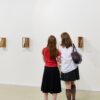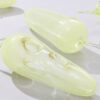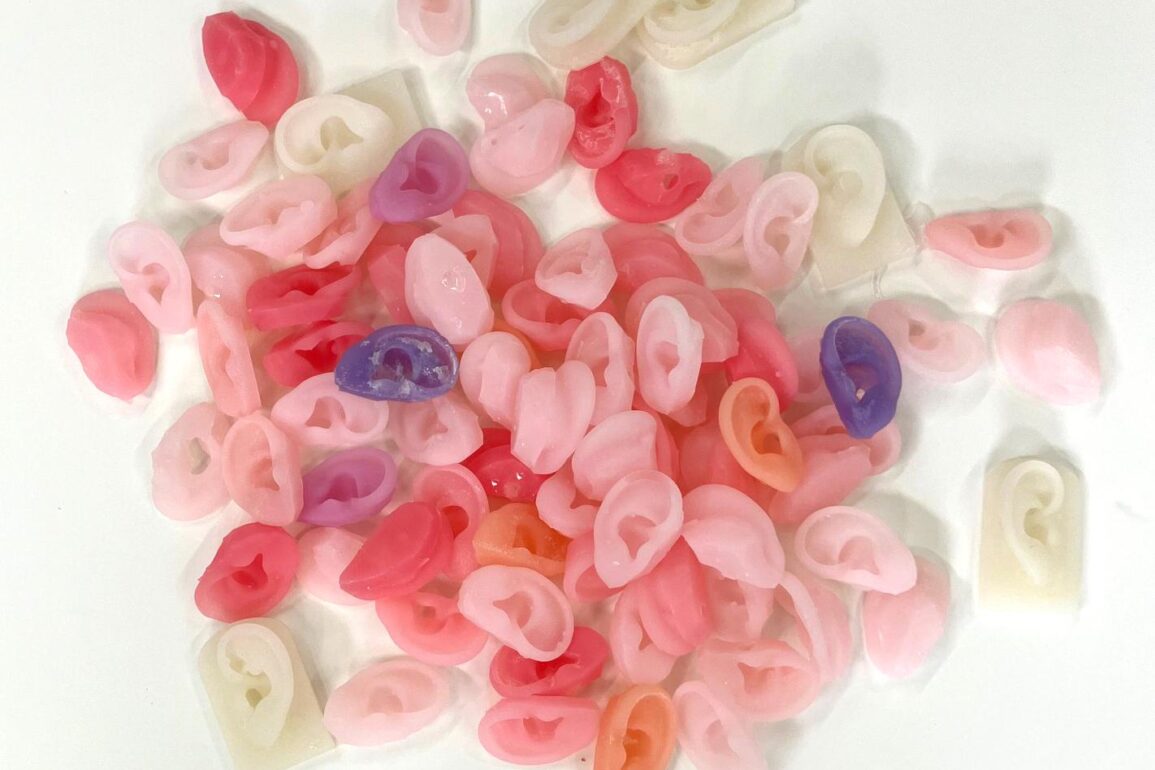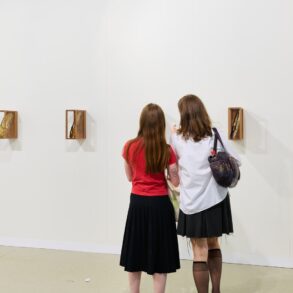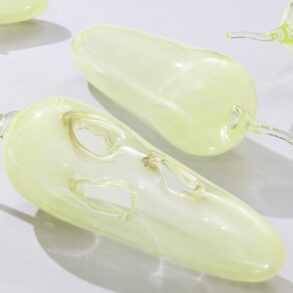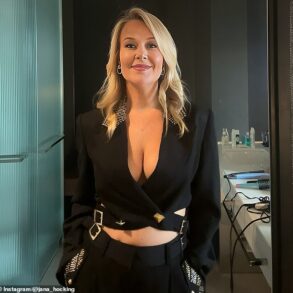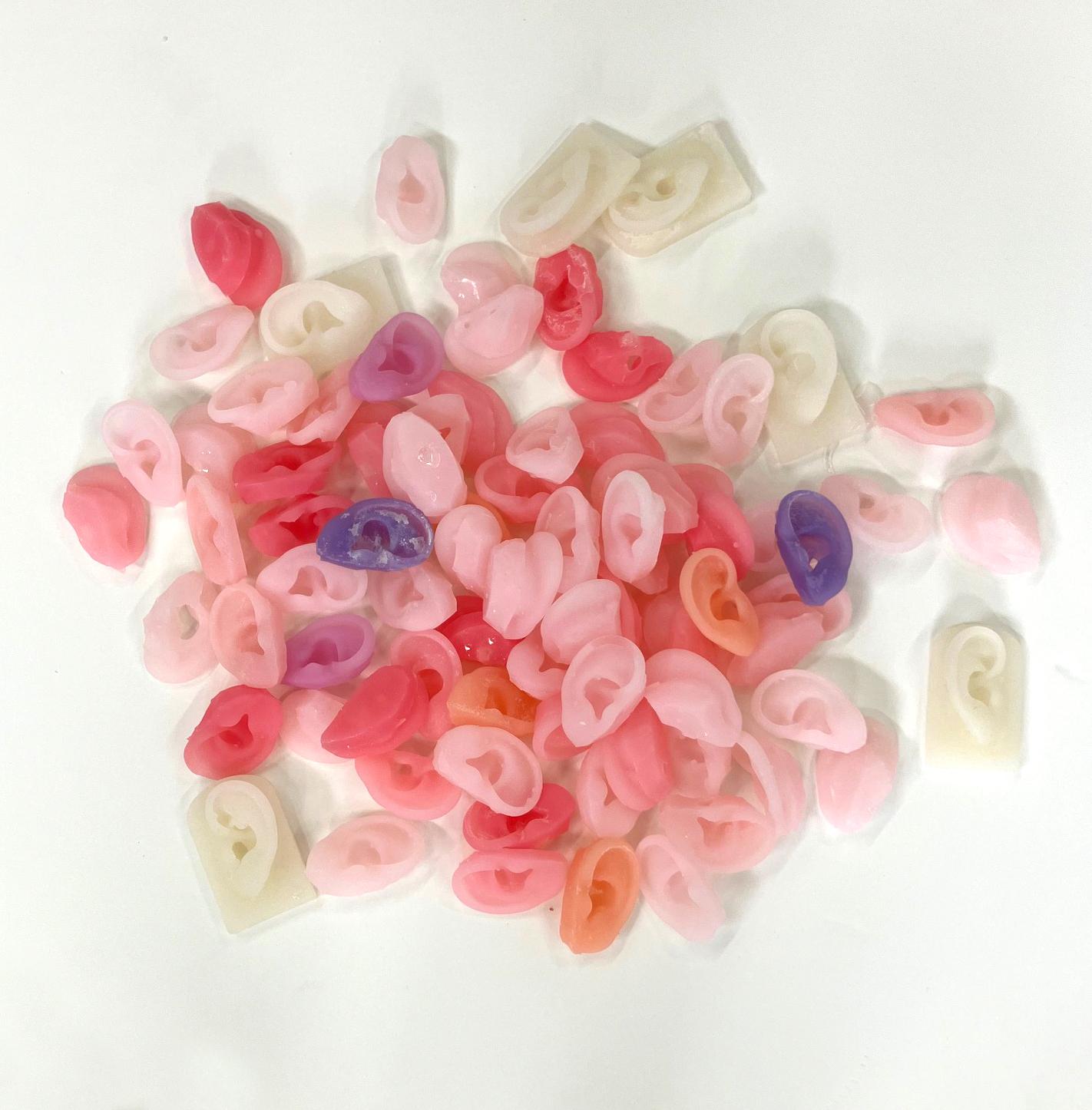
Sculptor Lesley Bodzy jokingly ended our conversation on navigating societal pressure put on women by checking her watch and politely excusing herself to head to a beauty appointment at the salon: ”Actually, I can’t be late.” Hailing from Los Angeles, but having lived in New York for years, she is impeccably chic with a dark bob and a flawless complexion. Probably thanks to the attention she gives to her looks, her work exposes and critiques societal norms around aging, plastic surgery, and the visibility of women, and the pressures they face—through material experimentation and mastery with both humor and candor.
Bodzy’s work aptly titled “FOGO” (Fear of Growing Old)—deflated balloons, her “Goddesses”—breastplates hanging by meat hooks, and the constellation of silicone ears “Hearsay” are on view alongside tapestry portraits by Rhode Island-based artist Katie Commodore in “Womanhood 102” curated by Erica Criss at Space 776’s Lower East Side outpost between May 31 and June 8. Commodore’s woven portraits depict her friends, in sexual poses, amidst lush and textured domestic interiors where Commodore has incorporated historical textile and wallpaper patterns and embroidery, all long relegated as a secondary (decoration) or women’s art form. They celebrate “realness” and counteract shame surrounding sexuality and the body. Using two feminist texts as her conceptual framework—“Girl” by Jamaica Kincaid (1978) and “Be A Lady They Said” by Camille Rainville (2017)—Criss, whose background is in printmaking, has selected works by Bodzy and Commodore that retaliate against impossible beauty and contradictory behavioral standards placed on women.
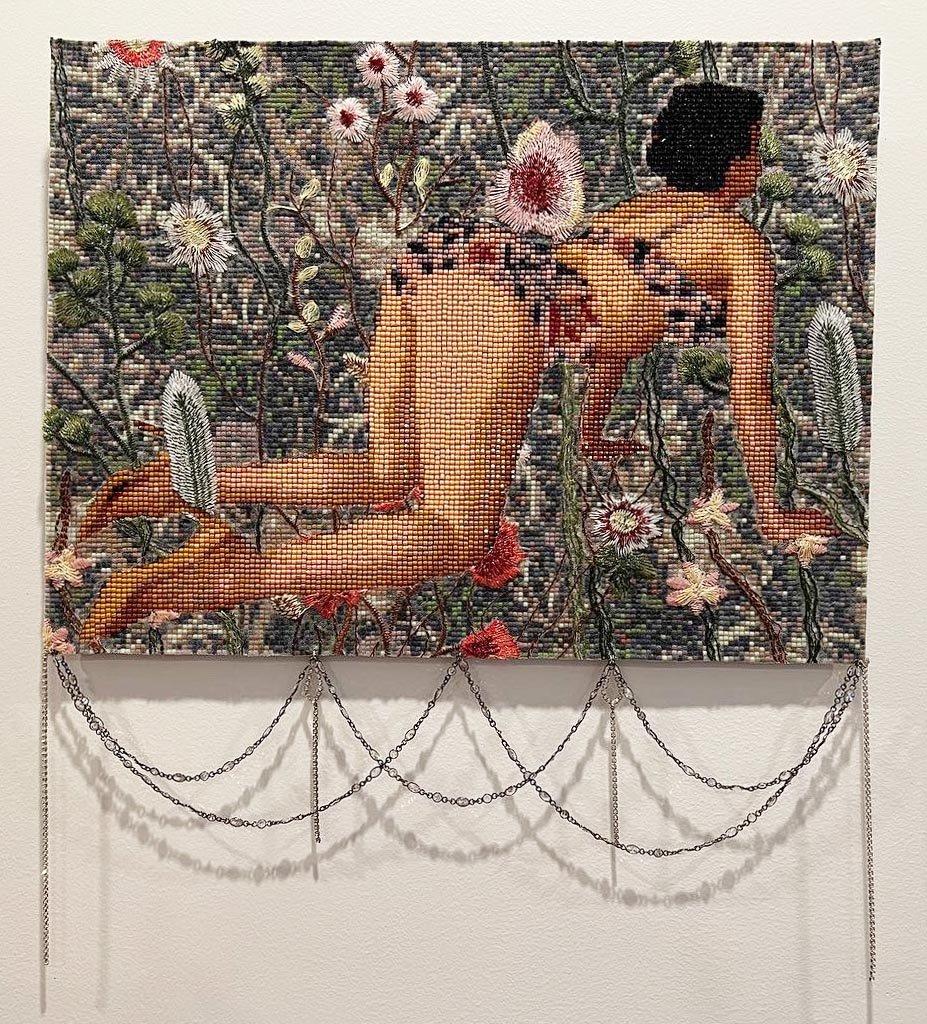
As with much feminist art, the body is central in both Bodzy and Commodore’s work, but in more ways than one. As Commodore has MS and is slowly losing her super fine motor skills and the use of her hand she started working in embroidery. It is a medium where she has control without relying on a steady hand—in her words, “You can stab a piece of fabric a thousand times until you get it in the right spot and it’s no problem.” While Bodzy uses body parts as a point of departure to create sculptures that embrace or mimic body parts. Centering on flawed and flawless, and everything in between, Commodore and Bodzy embrace failure as a mode of development. Perhaps because in the female experience, one is close to the feeling—never being able to achieve that artificial beauty standard, that ideal weight, the perfect outfit. ‘Never mind,’ say Bodzy and Commodore, going about their art-making and altering their body-image perceptions—diligently breaking barriers for themselves and others around them.
AME: Julia, Carly, Erin, and Sue are all portraits of friends of yours based on photographs, right? How do you work with your subjects to make them comfortable?
KC: I am a terrible photographer, so I take a lot of terrible photographs, hundreds perhaps, during each photo shoot. I use them for reference, often combining several images to create the perfect moment, to create drawings or paintings. For the tapestries, I do all the art on the computer and then send the basic image (a figure/s with a patterned background) to the weavers as a jpg. Once I get the weavings back, I start embroidering and adding things to the surface to make them more special and involved.
As for how I make my models comfortable, well, I think that’s the important part of them being my friends. I’ve been told I naturally make people feel comfortable around me, and that I have a very open presence and soothing voice. I try very hard to not judge anyone, friend or stranger. I don’t ever directly ask people to model for me, but I wait for them to volunteer. The last thing I want is for someone to do anything that makes them uncomfortable, especially when the whole point is to create images that celebrate their power and gorgeousness. I usually do the photo shoots at their places, so they can change outfits or grab toys as they feel inspired, but photoshoots have taken place at my home in some circumstances. I don’t direct the pose or give anything but positive feedback on outfits or ideas, because it’s not about me and what I think looks sexy, it’s about them sharing with me the expression of their most intimate and powerful sexuality. When it’s a couple, I try to just be a fly on the wall and eventually disappear. Basically, I’m just a voyeur documentarian of people’s most private moments.
AME: You spend half of the year in your studio in Houston with material experimentation. What drives you to continue to explore materials? And, tell me a little about how you think about ‘failures’ in these processes. Does that term exist?
LB: Yes, I am driven to explore materials, and failures and mistakes are an important part of the process. I don’t like to accept the idea that “no it can’t be done.” If someone tells me it can’t be done then I want to find a way to do it. For example, when I first started working with the gold drapes I was working very small, say six by four inches. The materials worked well at this size, but then when I tried to scale up to the five foot drapes I had to change and refine my materials as they would not stand up to to size. It took two years of experimentation to find the right formulas and treatments to make the Soft Embrace series you see today.
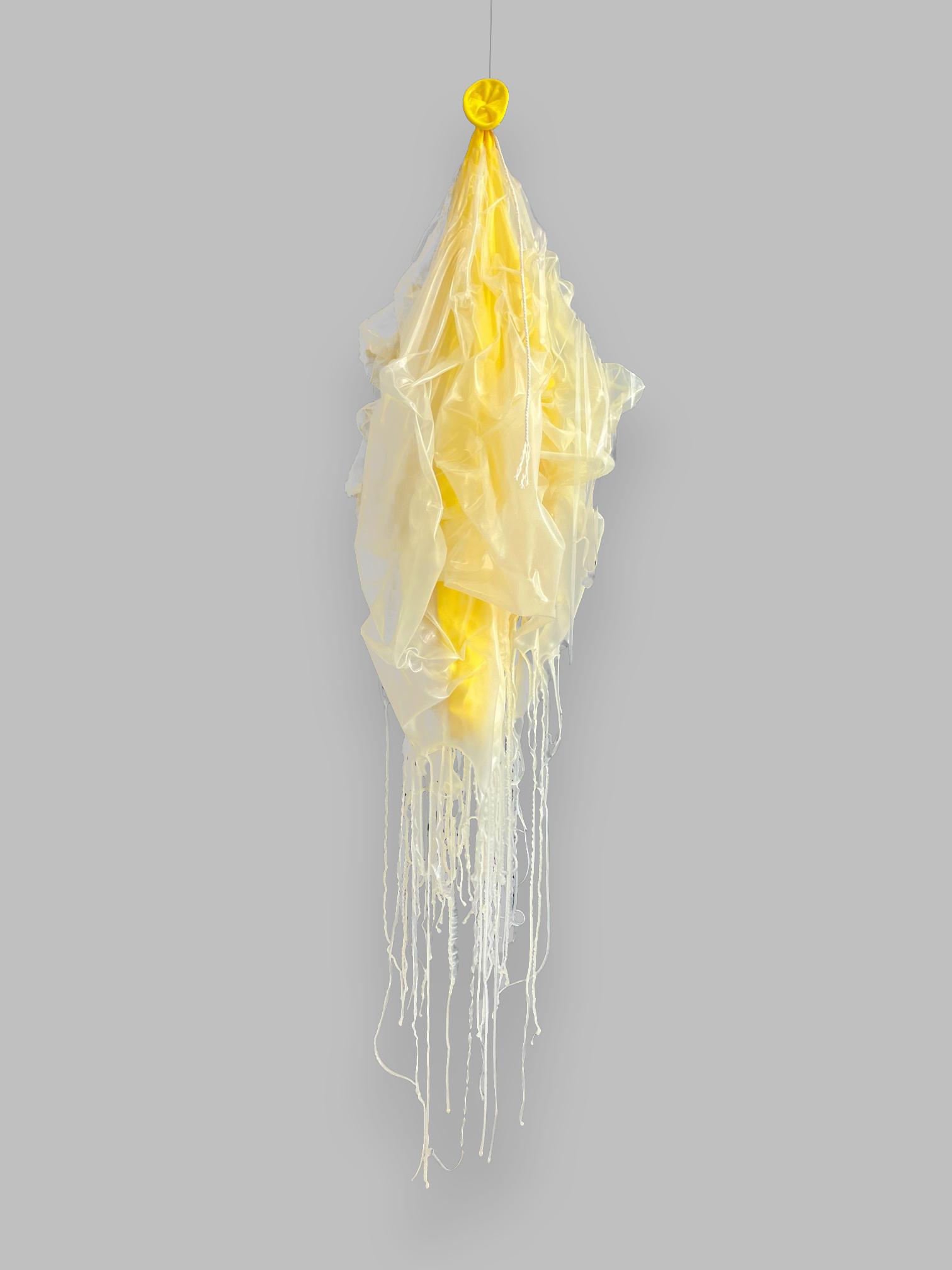
AME: The title, FOGO (it’s Fear or Growing Old right?) of your new body of works centering balloons is so clever! The balloon has a wealth of comparisons to make with aging, deflation, ripping, and the crumbling of the material. How did you come to work with balloons? And, how have you worked with color in this series?
LB: Similarly to the gold series, the balloon series started off with small balloons about 3 years ago. I have refined the materials over time to be able to scale up. I realized that I was making a comment on aging during the scaling-up process. The balloons start off inflated and resemble breasts. Then when they deflate they pretty obviously resemble what happens to human breasts over time. As an artist who is on the far side of 40, I realized I was making a commentary about my aging process. The bright artificial colors symbolize the artificial beauty standards that women struggle to achieve.
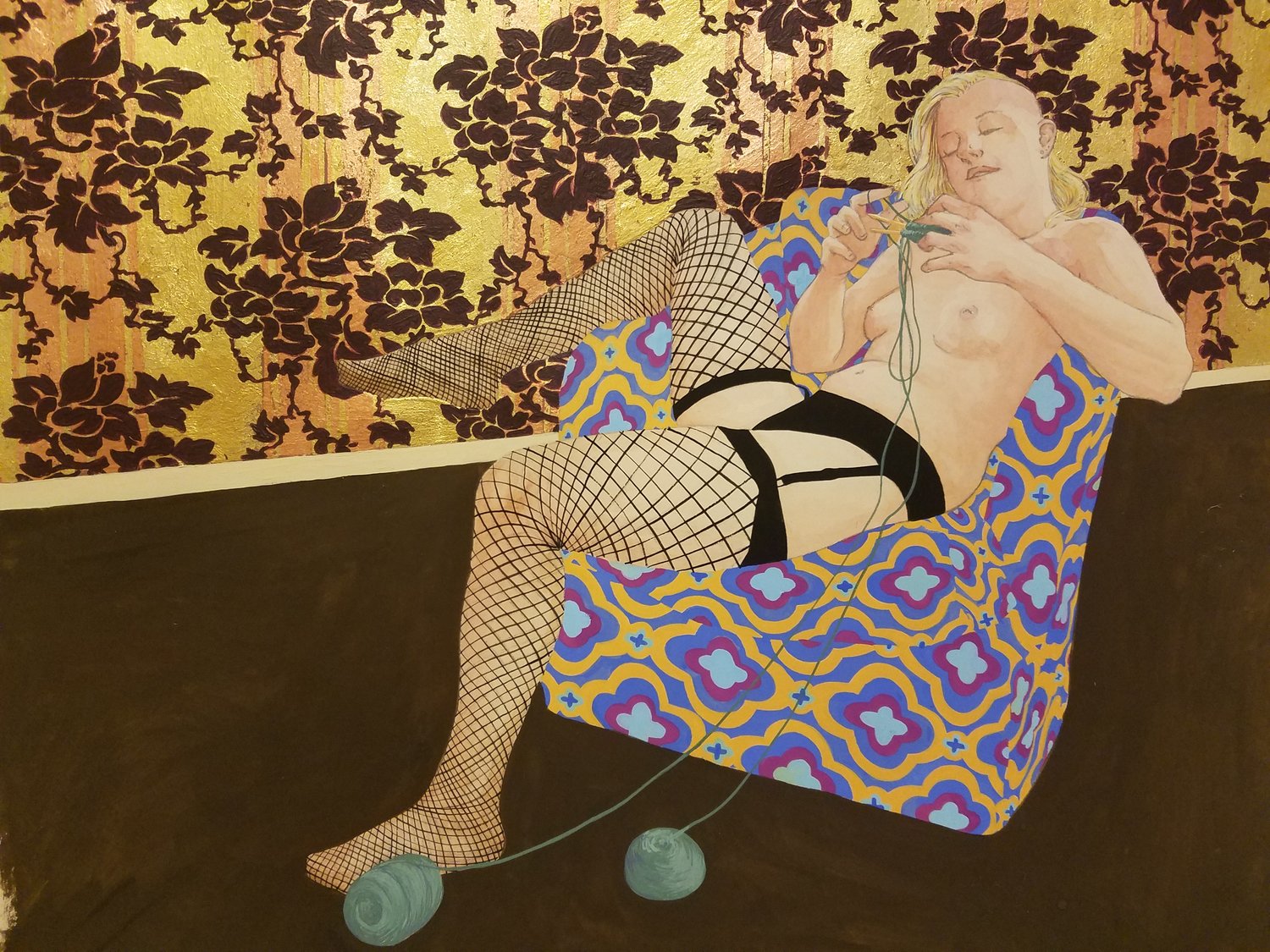
AME: In your work with patterns there is a nod to material culture and decorative arts—wallpapers, upholstered furnishings, and patterned fabrics—and of course your woven work is fiber art and in one of your works your subject is knitting. How did you shift from Printmaking to fiber and where do you find your patterns?
KC: All of the patterns I use are historical wallpaper and fabric patterns from all over the world, the patterns I use range from sources that include pre-medieval wallpapers to Indian rug patterns. I admit that I have a true weakness for anything from the Arts and Crafts Movement. The Victoria & Albert Museum is my favorite museum because they have the most amazing collection of all things patterned and beautiful.
Technically, the tapestries are monotypes, so even though they’re fiber-based, they fall within the realm of Printmaking. I could edition them, but choose not to. The substrate is digitally woven, or “printed”, in a way that’s repeatable (or editable) and then I add hand embellishments, which makes each unique, and thus a monotype. So, I haven’t left the realm completely.
However, in reality, I started working with embroidery for several different reasons.
First, it’s not a huge part of my artistic statement, but I prefer to use materials that historically were considered “women’s work” or “women’s crafts” until men began to be recognized for this same kind of art, and it became an “art form”. Gouache, wood engraving, and historical tapestries were all mediums that women commercially were the main users or creators within until those mediums became male-centered and became “artistic”. Gouache, in the ’40s through ’70s was mostly used in advertising for mock-ups, which unnamed women predominantly painted in advertising firms run by men. Wood engraving was used in early newspapers and printed materials for depicting any illustration or image until they invented a way to print photographs. Those illustration plates were predominantly carved by women, who all lost their livelihood when they discovered a method for lithographically reproducing photos, and then wood engraving became an artistic printmaking technique completely dominated by men. Historical tapestries were often designed by men, but woven or embroidered by teams of women. This is all just a little undercurrent of my work that is just for me. I love the idea of creating work that is of a subject matter traditionally only created by men for men, in materials that used to belong to the realm of women.
AME: In your artist statement you mention that “we change our kinks and sexual preferences partner to partner, year to year” likening how people change our bodies and clothes to how their sexual preferences (and confidence levels) might develop. Can you speak more about how you think about sexuality and what you hope your work will bring to audiences’ understanding of the wide-ranging concepts?
KC: Both men and women talk about their sexuality and sex lives to friends all the time. We brag about conquests, complain about lovers or lack of lovers, and express surprise at how awesome something was, or how terrible it was…it’s a huge part of what we talk about with our social groups. We might not use specifics all the time, but often we do. Otherwise, no one would have watched “Sex in the City.” We certainly didn’t watch it for the acting.
To the rest of that question, my goal has always been to celebrate people and their realness so that others can see that they too are worthy of celebrating and enjoying. No one’s sexuality, so long as it’s all consensual and with joy at heart, is taboo or dirty, it’s all beautiful. I want particularly Queer Love and Female Sexuality to be celebrated and normalized.
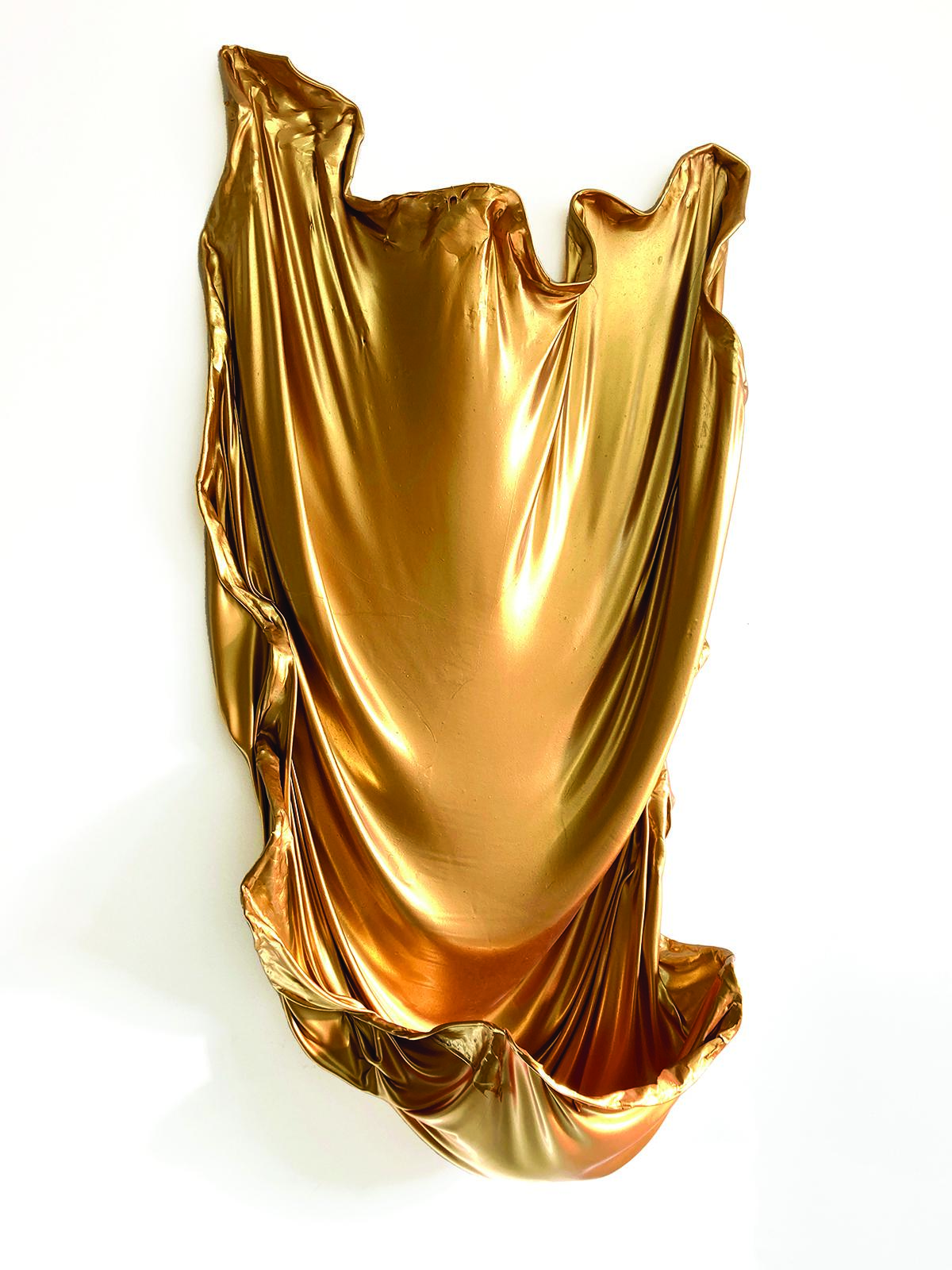
AME: The body is immensely present in your work. In the paintskins, they loom over the viewer, ready for an embrace, or perhaps concealing a body behind. The silicone ears, “Hearsay” are listening. How do you think about the body and various bodies in relationship to your sculptural practice?
LB: Well, I am concerned with beauty, specifically as it is used to define women. I am interested in how much women are defined by those around them, and society. Beauty standards were a very big thing when I was growing up and women were defined more by how they looked than what they thought. This has changed a lot in that women’s thoughts are more valued but in a way it has not changed as women are now expected to be both smart and beautiful. It can be a lot of pressure.
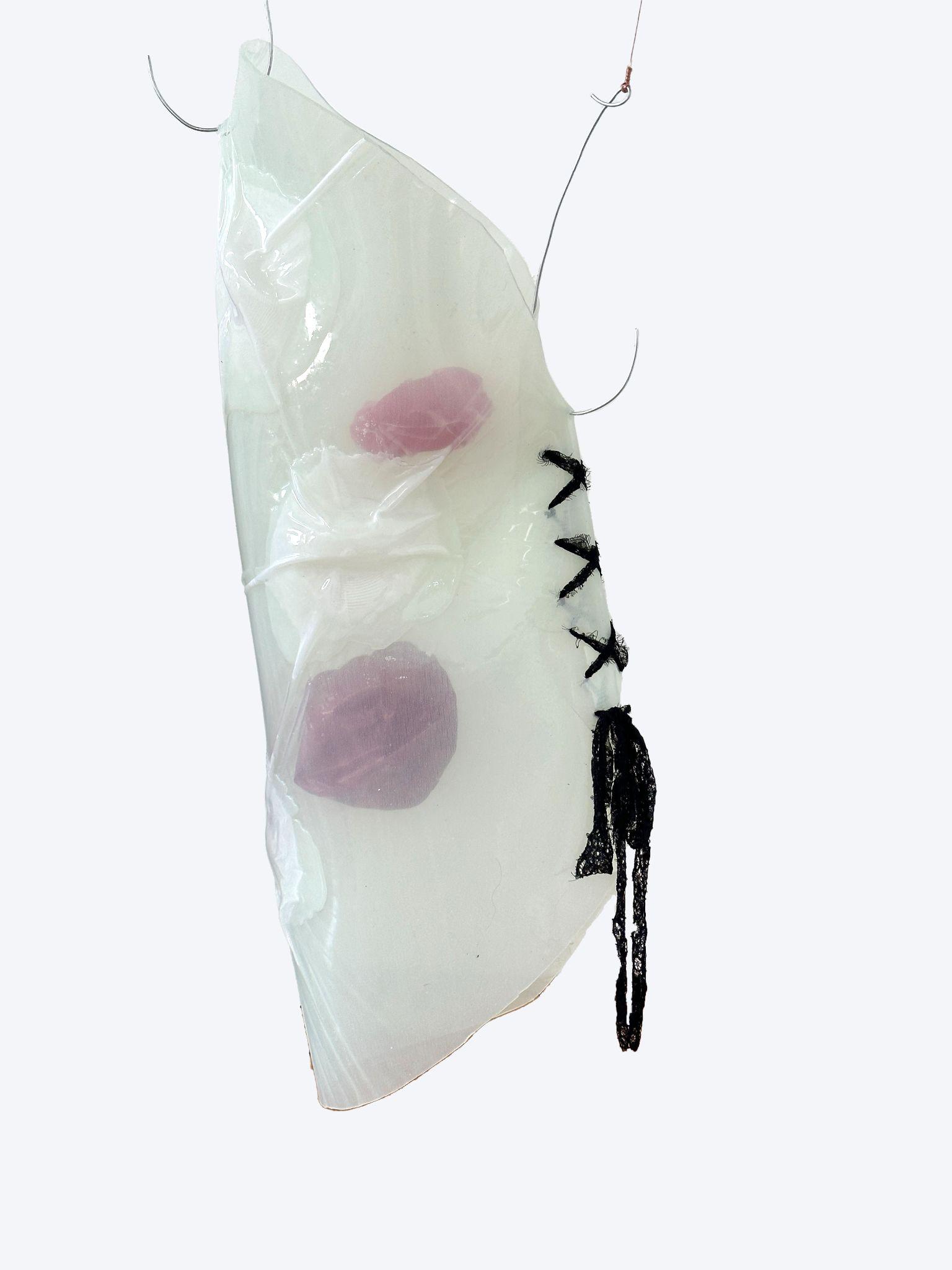
AME: I love the work “Goddess,” please tell me more.
LB: There are six Goddesses in the series and they all hang from meat hooks. So when they are all shown together it is a sort of meat locker of bodies or breastplates.
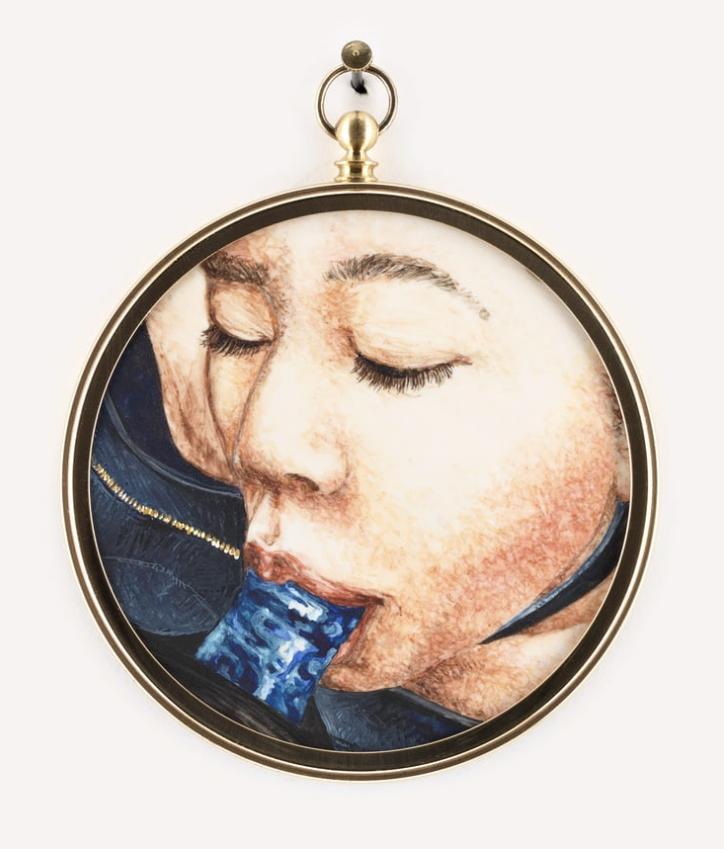
AME: Finally, the exhibition is centered around how women pass on impossible standards of behavior to other women and girls. How have you overcome or navigated these societal pressures in your life?
KC: I’m not sure I have overcome them. I have the same insecurities as every 45-year-old woman. I need to lose weight, I shouldn’t be wearing that outfit, I’m going grey, where did that wrinkle come from… I think the only difference is I don’t hyper-focus on it. I’m glad I’m getting older, the alternative would mean I didn’t survive this long. I don’t want to be young forever, I want the respect that comes with being someone who’s been around long enough to know something. I’ll never be thin, but I can still be beautiful. No matter what I look like, I can still be a caring, kind person. It’s true, I don’t wear make-up, I wear mostly men’s clothes day to day, and I don’t do most of the things that “ladies” do to present themselves. But now that I think about it, none of the women in this show had make-up on, they might have just shaved in a couple of cases, but in others, I know they didn’t. Sexiness isn’t about those things. Sexiness is about being genuine to yourself. There is nothing more sexy than confidence, and that often comes from the inside, not what’s on the outside.
Womanhood 102 curated by Erica Criss is on view at May 31-June 8, 2024 at Space 776, 37-39 Clinton St., 1st Fl., New York, NY 10002.
You Might Also Like
Lesley Bodzy’s Sculptures Unleash, Unfurl, and Embrace
Body Spirit Geology: Women Artists Working with Metaphysical Presence
This post was originally published on this site be sure to check out more of their content

